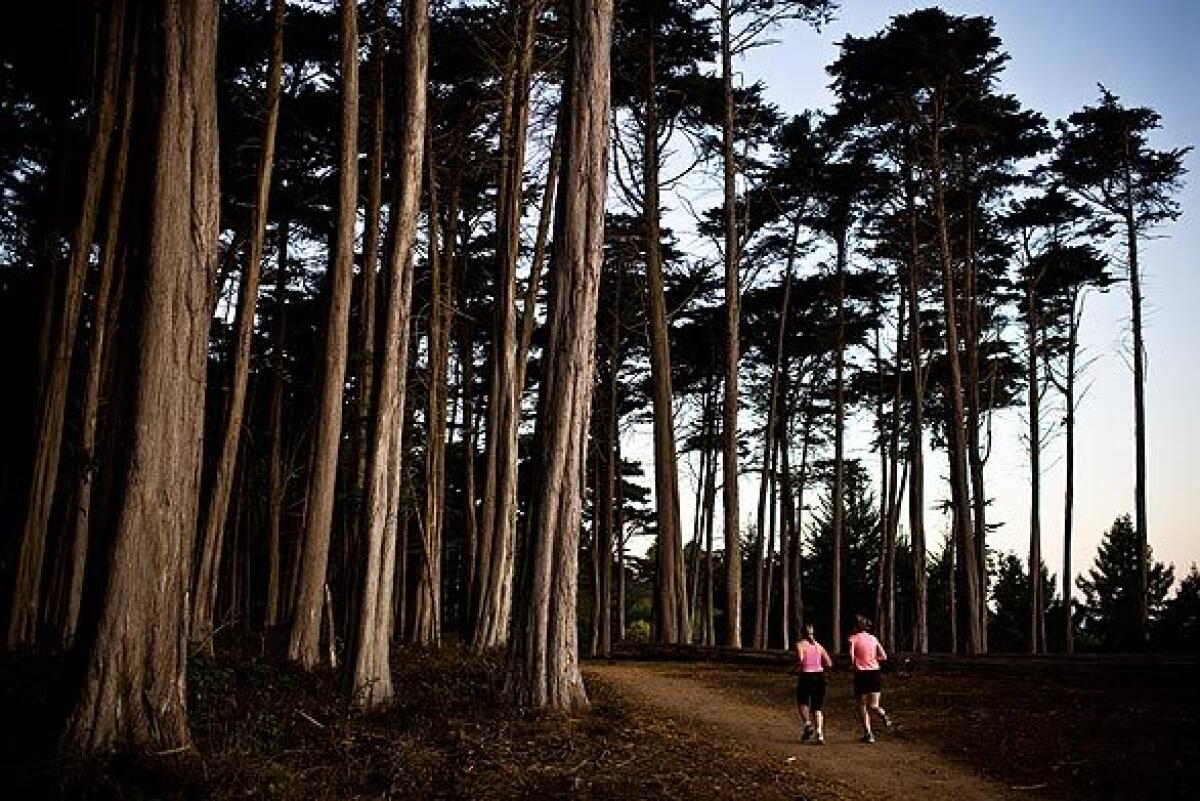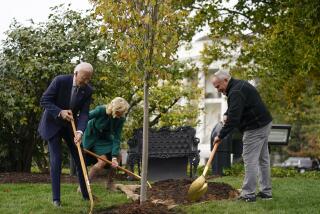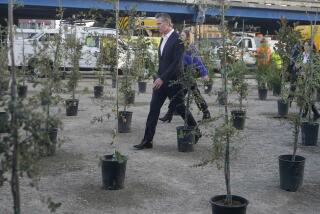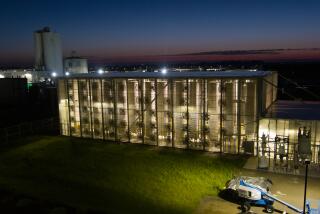Trees could reduce carbon in the atmosphere to levels not seen in nearly 100 years

- Share via
By removing carbon dioxide from the air, trees are one of our strongest allies in the fight against climate change. And if we planted a whole lot more of them in just the right places, they could reduce the amount of carbon in the atmosphere to levels not seen in nearly 100 years, researchers say.
After examining more than 70,000 high-quality satellite photos of trees from all over the planet, ecologists concluded that the Earth could support 900 million additional hectares of tree cover. Those trees would eliminate about two-thirds of the carbon that’s in the atmosphere today as a result of human activities, according to a study in Friday’s edition of the journal Science.
For the record:
11:47 a.m. July 5, 2019An earlier version of this article said a hectare is 100,000 square meters. A hectare is 10,000 square meters.
While international initiatives have set targets for conserving and restoring the world’s forests, researchers had never worked out the details — like what kinds of trees to plant and where to put them, said study leader Jean-Francois Bastin, an ecologist from the Swiss Federal Institute of Technology in Zurich.
“What’s the maximum that we can do on the planet?” Bastin said. “How much trees could the planet support, and what could be realistically done?”
To answer those questions, Bastin and his colleagues developed a computer program that estimates how much forested land could be restored both now and in a future warmer world.
The team members combed through 78,774 satellite photos of a variety of ecosystems — everywhere from the lush rainforests of the Amazon to the arid Sahel in Africa — that had been protected from human influence. They counted every tree in every photo to assess the current tree coverage in natural environments.
The researchers combined that information with data about the climate, temperature and soil conditions for each ecosystem. Then they taught their program to put it all together to determine how much tree coverage a particular area could support.
The result: Trees currently cover 2.8 billion hectares of land — but they have the potential to populate as much as 4.4 billion hectares. (A hectare is 10,000 square meters, a little less than 2.5 acres.)
Right now, a good chunk of the additional 1.6 billion hectares is being used for agriculture or urban spaces. The researchers took those areas off the table and saw that the Earth still has 900 million hectares ready and waiting to be restored with trees — an area roughly the size of Brazil.
When those trees mature, they could remove 205 gigatonnes of carbon from the atmosphere, the study authors calculated. That represents about two-thirds of the roughly 300 gigatonnes of atmospheric carbon that can be traced to human actions, they said.
Bastin offered another way to look at it: If those additional trees are planted in short order and they live up to their full potential, the amount of carbon in the atmosphere would fall to levels not seen since the 1920s.
So where are these 900 million hectares? More than half of them can be found in just six countries: Russia, the United States, Canada, Australia, Brazil and China.
Working with countries is where tree restoration will get tricky, said Matthew Hansen, a remote sensing scientist at the University of Maryland who was not involved in the study. Governments with growing populations may need some of this available land for expanding cities, or to make room for more agriculture so that food shortages aren’t a problem.
“Restoration is going to have to deal with the facts on the ground,” he said. “Where are the strong governments with mandates and motivations to do restoration? Where are the ones that are hostile to it?”
The study authors repeated their analysis for the year 2050, assuming that present trends continue. In that scenario, trees can’t provide as much help as they would today.
Areas that are now colder could become hospitable to more trees. However, those gains would be more than offset by tree loss in places that have dense forests today.
“If you look at all the number of trees that we might gain or lose, we see that we risk to lose more than we might gain,” Bastin said.
Researchers who specialize in forest restoration said the study makes a strong case that there’s no time to waste.
Bastin and his colleagues “clearly show that we have a narrow window of time in which to restore global tree cover,” Robin Chazdon of the University of Connecticut and Pedro Brancalion of the University of São Paulo wrote in an essay that accompanies the study. “We need to act quickly, intelligently, holistically and globally.”
They added that all trees aren’t created equal. Planting a tree in an area where it wouldn’t grow naturally can cause problems for the overall ecosystem, and for those who live nearby.
“The kinds of trees as well as how and where they are grown determine how and which people benefit,” wrote Chazdon and Brancalion, who didn’t participate in the study. “In some contexts, increasing tree cover can elevate fire risk, decrease water supplies and cause crop damage by wildlife.”
Karl-Heinz Erb, a social ecologist at the University of Natural Resources and Life Sciences Vienna who wasn’t involved in the research, said economic fairness should factor into decisions about where to plant trees. For instance, converting land used by grazing animals into forests would disproportionately affect poorer people, he said.
Even if trees are planted in the most mindful way possible, it won’t be enough to keep greenhouse gasses in check, Bastin said.
“Restoration is a very strong weapon to fight climate change,” he said. “But it needs to go along with other actions, like changing the way we are living on the planet.”






